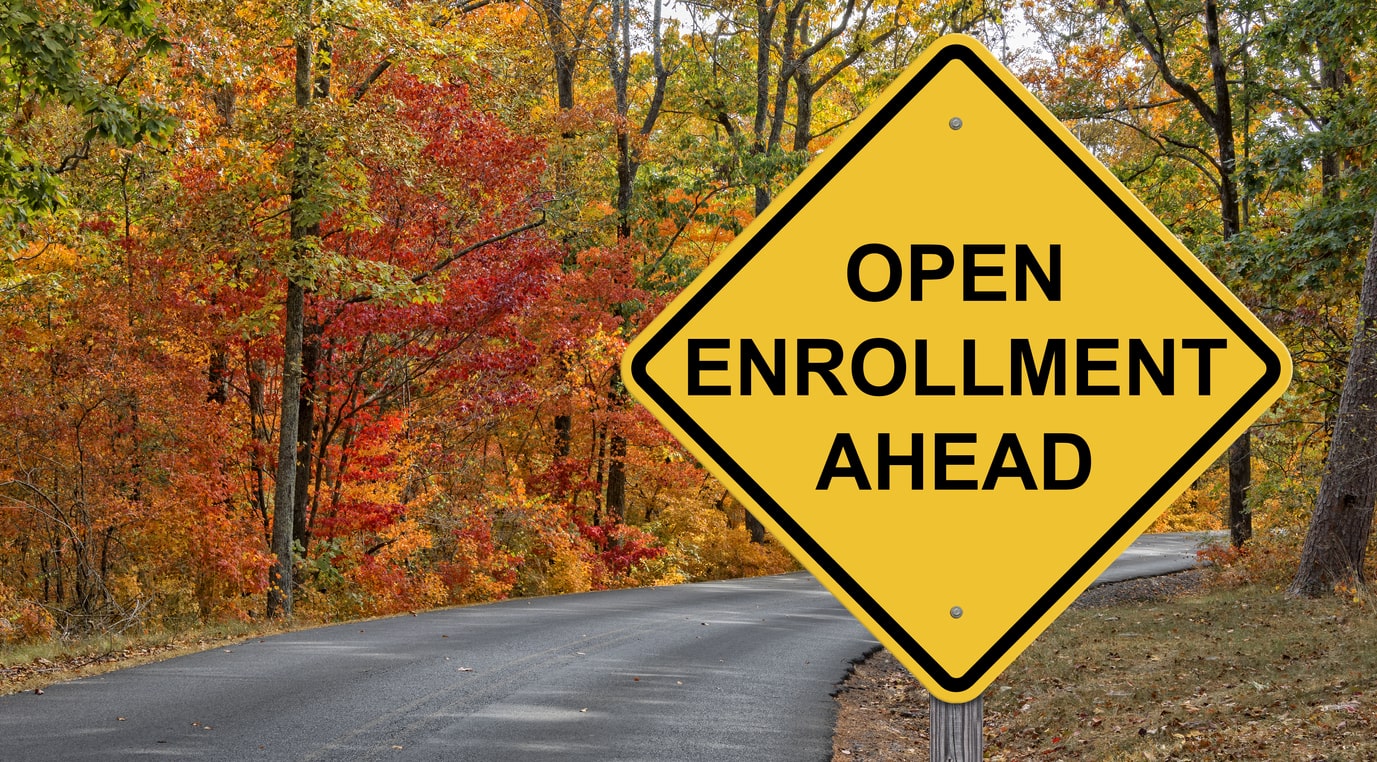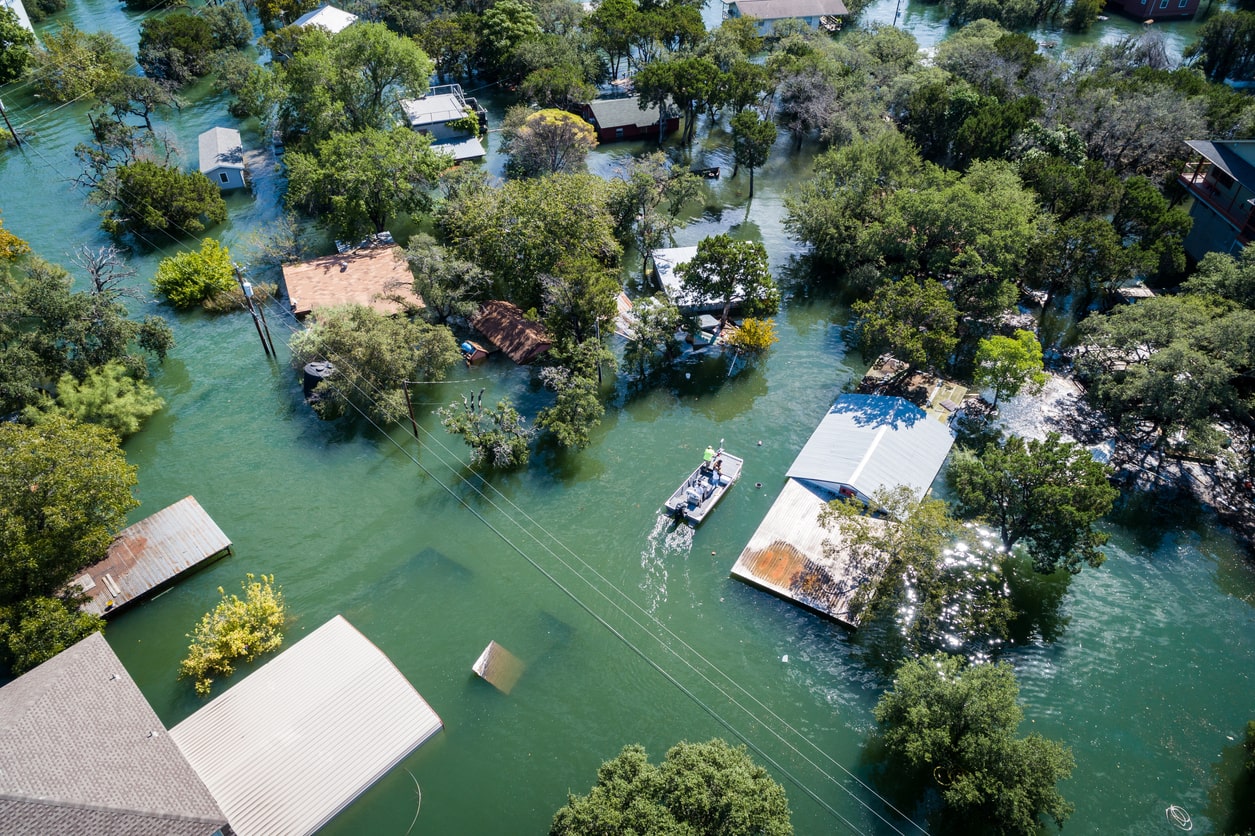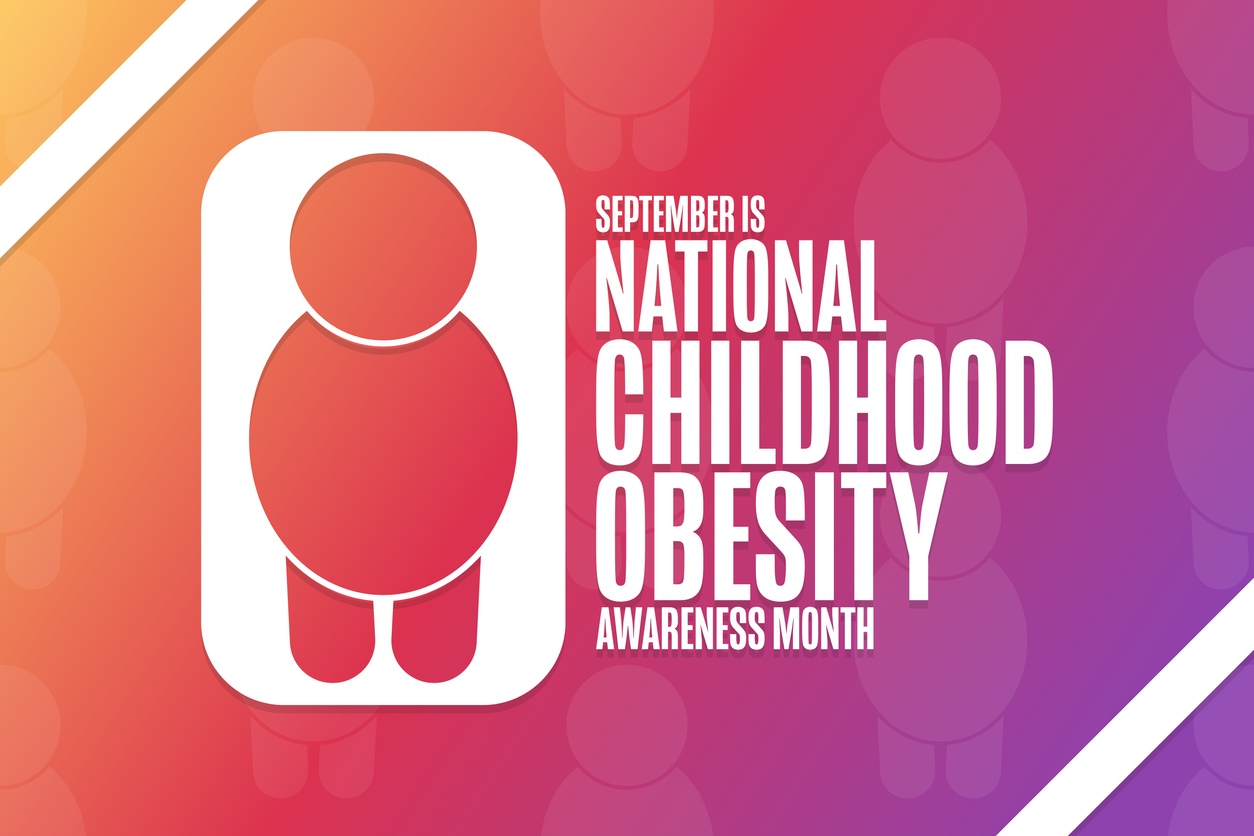Author: Gerry Acuna
The Steep Reality of College Costs
January 13, 2023

There’s a saying that college costs an arm and a leg. However, this is far from true. In reality, it may cost as much as a starter house in a decent neighborhood plus a car or two.
The cost of college has been on the rise over the past two decades. According to the U.S. News recent data, tuition and fees at private national universities have increased by 134%. Out-of-state tuition and fees at public national universities have surged by 141%. Above all, in-state tuition and fees have risen by 175%.
The National Center for Education Statistics claims that in 1980, the cost for attending a four-year institution was $10,231 annually. However, between 2019-2020, the annual price soared to $28,775, indicating a 180% increase. According to Forbes, this reason behind this drastic increase includes recent changes in state and local funding due to shifts in market conditions and tax revenues, more maintenance costs for college-provided services, and the expansion of student-support resources.
What is Included in College Costs?
There are several expenses included in total college cost. Besides the initial tuition that institutions require for enrollment, many miscellaneous fees are required over the course of a college education.
Some of the main items included in the cost of college are below::
- Tuition
- Room and board
- Books and school supplies
- Equipment and room materials
- Travel and expenses
The Dos for Affording College
Before you consider selling your home or taking out a hefty loan, there are several methods that families employ in order to better afford the rising cost of college. These methods include both long-term and short-term plans. They include the following:
Scholarships
Various organizations provide scholarships asfree aid for students. These scholarships can be offered at both the local and national level, ranging from small to large sums of money to help pay for tuition costs and fees.
These can be merit-based, academic, or athletic scholarships granted based on a student’s performance. The U.S. Department of Education awards close to $46 billion in scholarship money annually to help students cover costs.
Federal Grants
Yes, the government can give you money! The U.S. Department of Education awards federal grants to students based on their financial status. In order to qualify for these grants, students submit their Free Application for Federal Student Aid (FAFSA) to determine how much money is allotted for their college costs.
Federal Loans
The federal government distributes fixed interest rate loans to the public that are either subsidized or unsubsidized. Subsidized loans are permitted based on financial need where the government covers the interest acquired by a loan during the time a student is in school to six months after graduation. On the other hand, unsubsidized loans require a student to pay the gathered interest on a loan.
Work-Study
The Federal Work-Study Program offers part-time jobs to students to earn money towards their college expenses. These jobs can be either off-campus or on-campus and are required to pay students the federal minimum wage.
Advanced Placement and Dual-Enrollment Credits
Throughout high school, many students enroll in Advanced Placement (AP) or Dual-Enrollment classes to receive college credit. They may require many sleepless nights and endless amounts of homework, but earning prior credit for these courses helps students save college tuition costs.
College Savings
The most important method for reducing costs is creating a plan ahead of time to allocate money for college. A 529 college savings account, which is an investment account that provides tax benefits, can help cover educational expenses. Designing a plan ahead of time will help make college more affordable for students across the nation.
InsureYouKnow.org
As a parent, it is important to start coming up with solutions to make college more inexpensive for your children. Consider applying for federal loans and grants, having your student apply for scholarships and work-studies, and most importantly, have a plan ready for college savings and payments. At insureyouknow.org, you can track college costs and plan out potential methods for saving money on educational expenses.
Medicare Will Cover Shingles Vaccine in 2023
December 27, 2022

Starting in January 2023, Medicare will cover the cost of the shingles vaccine, Shingrix.
The Centers for Disease Control and Prevention (CDC) recommends adults 50 years and older get two doses of Shingrix two to six months apart to prevent complications from the disease shingles. Shingrix is more than 90 percent effective in preventing illness, according to the CDC. But for many people on Medicare, it had been unaffordable at more than $200 for the shot regimen.
The Inflation Reduction Act of 2022 aims to reduce the cost of some drugs and close this barrier to good healthcare. As of January 2023, all vaccinations covered under Medicare part D that are approved and recommended by the Centers for Medicare and Medicaid and the CDC will be covered without a copay. So, no cost-sharing will be associated with the administration of Shingrix, as well as flu shots; tetanus, diphtheria, and pertussis vaccines; and COVID-19 vaccines.
What is “shingles”?
Shingles is an invasive, painful outbreak of rash or blisters on the skin that can damage your vision or hearing, make you lose hair, and cause long-term nerve pain. It is caused by the varicella-zoster virus—the same virus that erupts in chickenpox. After you have chickenpox, the virus stays in your body. It may not result in problems for many years, but as you get older, the virus may reappear as shingles.
Is shingles contagious?
Shingles is not contagious. But you can catch chickenpox from someone with shingles. If you’ve never had chickenpox or the chickenpox vaccine, try to stay away from anyone who has shingles. If you have shingles, try to stay away from anyone who has not had chickenpox or the chickenpox vaccine, or anyone who might have a weak immune system.
Who is at risk for shingles?
Anyone who has had chickenpox is at risk of getting shingles. More than 99 percent of Americans born before 1980 have had chickenpox, even if they don’t remember it. The risk of contracting shingles increases as you get older; shingles is most common in people over 50. People with weakened immune systems are at higher risk of getting shingles. About one out of every three people in the United States will develop shingles during their lifetime. It is rare, but possible, to get shingles more than once.
What are the symptoms of shingles?
Early signs of shingles include burning or shooting pain and tingling or itching. It is usually on one side of the body or face. The pain can be mild to severe.
One to 14 days later, you will get a rash. It consists of blisters that typically scab over in 7 to 10 days. The rash is usually a single stripe around either the left or the right side of the body. In other cases, the rash occurs on one side of the face. In rare cases (usually among people with weakened immune systems), the rash may be more widespread and look like a chickenpox rash. Some people may also have other symptoms, including fever, headache, chills, and an upset stomach.
What are some complications caused by shingles?
- Postherpetic neuralgia (PHN) is the most common complication of shingles. It causes severe pain in the areas where you had the shingles rash. It usually gets better in a few weeks or months, but some people can have pain from PHN for many years, and it can interfere with daily life.
- Temporary or permanent vision loss can happen if shingles affects your eye.
- Hearing or balance problems are possible if you have shingles within or near your ear. You may also have temporary or permanent weakness in the muscles on that side of your face.
- Very rarely, shingles can also lead to pneumonia, brain inflammation (encephalitis), or death.
How is shingles diagnosed?
Usually, your healthcare provider can diagnose shingles by taking your medical history, looking at your rash, and after scraping off tissue from the rash or swabbing some fluid from the blisters, sending the sample to a lab for testing.
How can shingles be treated?
There is no cure for shingles. Antiviral medicines may help make the attack shorter and less severe. They may also help prevent PHN. Recommended medicines are most effective if you can take them within three days after the rash appears. Pain relievers may also help with the pain. A cool washcloth, calamine lotion, and oatmeal baths may help relieve some of the itching associated with shingles.
InsureYouKnow.org
If you are at risk of getting shingles, contact your healthcare provider or pharmacist to schedule a Shingrix shot early in 2023, even if you are not covered by Medicare. Shingrix is also covered by most health insurance plans so check with your insurance provider to see if the vaccine is included in your plan.
At insureyouknow.org, record the date of your first shot and set a reminder for your second shot two to six months later. You’ll be off to a great start in preventing the pain and possible side effects of shingles in 2023.
Drug Shortages Amid the “Tripledemic”
December 14, 2022

‘Tis the season to be jolly, but your cheerfulness may be challenged by drug shortages across parts of the country, with the “tripledemic”—cases of flu, respiratory syncytial virus (RSV), and COVID-19—driving high demand for medications. These seasonal respiratory illnesses have emerged earlier than usual and have spread quickly and simultaneously across the country.
Healthcare Concerns
Record levels of illnesses have caused a spike in the demand for amoxicillin, resulting in an acute shortage of the antibiotic, which is widely used for the treatment of bacterial widespread upper and lower respiratory infections.
Physicians are facing shortages of critical drugs used during surgery. Shortages of key anesthesia medications used for most procedures and surgeries, and critical pain medications such as fentanyl are forcing doctors to use alternatives that may not be first-line or the optimal treatment for conditions or scenarios, or in the best interests of patients.
FDA and Pharma Companies’ Responses
According to the Federal Drug Administration (FDA), 123 of 184 listed drugs are currently in shortage. Officials say one of the reasons for the shortages is that drugs are manufactured based on orders from the previous year, meaning pharmaceutical companies don’t keep an inventory on hand year after year. Some manufacturers report that this year’s orders didn’t anticipate the heavy season for respiratory illnesses.
The FDA is working closely with numerous manufacturers and others in the supply chain to understand, mitigate, and prevent or reduce the impact of intermittent or reduced availability of certain products, including several over-the-counter (OTC) medicines used for symptomatic relief, such as the children’s medications liquid acetaminophen and ibuprofen. The FDA also has taken steps to help relieve the shortage by putting out guidance to pharmacists to make liquid amoxicillin for children from pill versions. (Amoxicillin pills for adults are not in short supply.)
Drug Manufacturing Problems
Drug manufacturers are having problems keeping up with their needs, including manufacturing and quality problems, delays, and discontinuations. Additional factors causing drug shortages are difficulties in acquiring raw materials, manufacturing problems, regulatory issues, business decisions, and disturbances within the supply chain.
Patients’ Actions
Throughout the country, shortages of certain medications and over-the-counter (OTC) pain relievers are leaving people on the hunt for a pharmacy or a grocery store to fill prescriptions and OTC products. Tamiflu, Adderall, and as already mentioned, even the standard antibiotic amoxicillin in liquid form, is getting hard to find.
If you can’t find a recommended medication readily available, you may need to call multiple pharmacies, look for a generic version, ask your doctor for an alternative prescription, or ask your pharmacist how to use an adult version of a medication for a child.
Brigid Groves, a pharmacist and the senior director for practice and professional affairs at the American Pharmacists Association, says, “The most important thing families can do for a sick loved one is to get them tested. Most doctor’s offices and some pharmacy clinics can do rapid tests to help determine whether your symptoms are coming from a viral or bacterial illness.”
InsureYouKnow.org
If you face challenges finding medications during the tripledemic, persevere in your hunt to fill a prescription or to find a substitute recommended by your healthcare professional. Document your health insurance and flexible spending account activities, lists of prescribed and OTC medications, where you found them, and when you’ll need to find and fill them again at insureyouknow.org
Kick Your Health Benefits into High Gear
December 1, 2022

As open enrollment season kicks into high gear, millions of people will have an opportunity to choose their 2023 health benefits.
Employers’ Healthcare Costs
Employers’ healthcare costs are rising, with large companies forecasting up to an 8 percent increase for 2023. The main difference with previous years will be higher prescription drug costs, which will jump 10 percent, the highest in the past decade.
Many companies will try to limit the share they pass along to their workers, as benefits are seen as a key attraction and retention tool in a tight job market.
Employees’ Healthcare Costs
For 2022, annual family premiums for employer-sponsored health insurance averaged $22,463, up slightly from $22,221 in 2021, according to the 2022 benchmark KFF Employer Health Benefits Survey. On average, workers contributed $6,106 toward the cost of family premiums, with employers paying the rest. The average premium for single coverage was $7,911 (up from $7,739 in 2021), with employees paying $1,327 annually, according to the survey. Nine percent of covered workers, including 21 percent of covered workers at small firms, are in a plan with a worker contribution of $12,000 or more for family coverage.
While premium data for 2023 generally won’t be available until after the new year begins, workers may see larger increases than in recent years.
Triple-Tax Advantaged HSAs
Some tools can help you manage your healthcare costs. More than three-quarters of large employers offer Health Savings Accounts (HSAs) that offer triple tax advantages: money contributed is pre-tax, it grows on a tax-free basis, and then can be withdrawn tax-free to pay for qualifying medical expenses now or in the future, all the way through retirement.
You can contribute to an HSA only if you’re enrolled in a qualifying high-deductible health plan. Average annual premiums for workers enrolled in HSA plans are lower than the overall average, but workers shoulder higher costs until they meet their deductible.
Employees can contribute up to $3,850 to their HSA for individual coverage for 2023, up from $3,650 this year; for family coverage, workers can contribute up to $7,750, up from $7,300 this year, per an announcement by the Internal Revenue Service. Catch-up contributions for those 55 and over remain $1,000.
Many HSAs give account holders the option to invest a portion of their money in the stock market. But fewer than 10 percent do so, as opposed to leaving their money just sitting in cash. If you can afford to pay your medical bills through your regular cash flow, your HSA funds will likely grow over time in the market and can be used in retirement to pay for a range of qualifying medical expenses.
HSAs are portable and remain with the owner through plan and job changes. If you are no longer enrolled in a qualifying high-deductible health plan, you can no longer contribute to your account, but you can still tap it to pay qualifying medical costs. Flexible-spending accounts (FSAs), by contrast, are linked to a particular employer; unlike HSA funds, money in an FSA must be spent down or forfeited within a certain period.
Health Insurance Plans under the Affordable Care Act
Outside of the employer market, open enrollment began on November 1 on Healthcare.gov for individual and family health insurance plans under the Affordable Care Act. In most states, open enrollment ends on January 15, although you must enroll by December 15 if you want coverage to begin on January 1. The Inflation Reduction Act extended the enhanced premium subsidies for ACA enrollees through 2025; for many, that may offset the moderate average increases expected to premiums.
Impact of Rising Drug Costs
There are two main reasons drug costs are rising: First, pharmaceutical companies are introducing better, but more expensive drugs for several important conditions. In most years, total drug cost would be tempered by other brand name drugs that were being replaced by generics, but in 2023, there will be fewer of these than usual.
Second, pharmaceutical companies are raising the prices they charge to private health insurance plans because they anticipate having to lower the prices they charge to Medicare. The recent Inflation Reduction Act allows Medicare to negotiate drug prices for the first time. Currently, only 10 drugs are on the negotiation list, but these are widely used. The list will rise to 20 drugs in the future.
The “No Surprises” Act
The “No Surprises” Act that went into effect in January 2022 is having its intended effect of lowering surprise out-of-network charges to patients who get emergency care, non-emergency care from out-of-network providers at in-network facilities, and air ambulance services from out-of-network providers.
InsureYouKnow.org
After you determine your healthcare insurance coverage for 2023, file your decisions at insureyouknow.org. Keep aware of government mandates that can affect your healthcare expenses for prescription drugs, out-of-network charges, changes in Medicare, increases in premiums, and your HSA and FSA contributions and withdrawals.
The Everything Kids’ Money Book
November 15, 2022

You want your children to become financially stable adults. But how can you interest them in this important topic, and make it easy to learn about and fun, when they are in their formative years? Your answer is The Everything Kids’ Money Book by Brette Sember that visually depicts boys and girls undertaking some enterprise having to do with money such as having a lemonade stand, saving for a new bike, or collecting coins. Written with kids ages 7 to 11 in mind, the author promises to teach them about money—“Earn it, save it, and watch it grow.”
Hands-On Activities Covered
Would your child like to . . .
- Learn how to make money at jobs appropriate for their age?
- Track where a dollar bill has been before they got it? There’s a simple way to find out.
- Learn how to make all their pennies shiny? It’s easy.
- Design their own dollar with someone’s face they like—Batman? Spiderman? The Incredibles?
- Do a magic trick with a dollar bill to impress their friends?
- Find out what fun things they can do for free? Grandpa and Grandma might know.
- Make a pizza garden?
Fun Money Facts Revealed
Would they like to know . . .
- Why they are called Piggy Banks, not Doggy banks, or something else?
- What is the name of the buffalo on the nickel and where did it live?
- What are dead dollars?
- What are some things money has been made from in the past?
Difficult Concepts Explained
As a New York Law Guardian, Brette Sember has many years of experience working with children. She has written more than 40 books on a variety of topics, such as law, health, food, travel, education, business, finance, parenting, adoption, and seniors. In The Everything Kids’ Money Book, she tackles subjects such as:
- Investments
- Budgets
- Saving money
- The cost of living
- Credit cards and debit cards
- Income tax
- Why borrowing money can lead to trouble
- Why lottery tickets are not a good investment
- Investments
- Budgets
- Saving money
- The cost of living
- Credit cards and debit cards
- Income tax
- Why borrowing money can lead to trouble
- Why lottery tickets are not a good investment
All these topics are covered in easy-to-understand language and unfamiliar terms are defined in the glossary. Answers to some of the questions posed and a page of resources are included at the back of the book. This section features books and websites with ideas kids will enjoy, more magic tricks to perform with money, how to start a small business, a website with money games, and how to collect coins.
Kids’ Money Book Promoted
MyBankTracker.com which “tracks thousands of banks to help you find the perfect match for your banking needs,” says this book is “more than simply a manual; The Everything Kids’ Money Book is a well-organized workbook that covers everything from money printing to compound interest.”
Investopedia.com which calls itself “The world’s leading source of financial content on the web,” echoes this opinion by saying the book, “Not only teaches kids how to save and earn their own money but also how to invest and earn interest.”
InsureYouKnow.org
If you decide to spend some bonding time discussing money concepts with your daughter or son, you may learn or relearn some basic financial truths. Keep a list of your kids’ moneymaking, spending, and savings plans at insureyouknow.org. You can measure their financial success on this portal and watch with them the ebb and flow of their profits and expenses.
Look Forward to Increases in Your 401(k) Limits
October 31, 2022

The amount you can contribute to your 401(k) plan in 2023 has increased to $22,500, up from $20,500 for 2022. The Internal Revenue Service (IRS) announced this change and issued technical guidance regarding all of the cost‑of‑living adjustments affecting dollar limitations for pension plans and other retirement-related items for the tax year 2023 in Notice 2022-55 posted on IRS.gov.
Highlights of changes for 2023
This contribution limit applies to employees who participate in 401(k), 403(b), most 457 plans, and the federal government’s Thrift Savings Plan.
The limit on annual contributions to an IRA increased to $6,500, up from $6,000. The IRA catch-up contribution limit for individuals aged 50 and over is not subject to an annual cost‑of‑living adjustment and remains $1,000.
The catch-up contribution limit for employees aged 50 and over who participate in 401(k), 403(b), most 457 plans, and the federal government’s Thrift Savings Plan has increased to $7,500, up from $6,500. Participants in 401(k), 403(b), most 457 plans, and the federal government’s Thrift Savings Plan who are 50 and older can contribute up to $30,000, starting in 2023.
The catch-up contribution limit for employees aged 50 and over who participate in SIMPLE (Savings Incentive Match PLan for Employees) plans has increased to $3,500, up from $3,000. (This plan allows employees and employers to contribute to traditional IRAs set up for employees. It is ideally suited as a start-up retirement savings plan for small employers not currently sponsoring a retirement plan.)
The income ranges for determining eligibility to make deductible contributions to traditional Individual Retirement Arrangements (IRAs), to contribute to Roth IRAs, and to claim the Saver’s Credit all increased for 2023.
Taxpayers can deduct contributions to a traditional IRA if they meet certain conditions. If during the year either the taxpayer or the taxpayer’s spouse was covered by a retirement plan at work, the deduction may be reduced, or phased out, until it is eliminated, depending on filing status and income. (If neither the taxpayer nor the spouse is covered by a retirement plan at work, the phase-outs of the deduction do not apply.)
Phase-out ranges
In a traditional IRA deduction phase-out, taxpayers can deduct contributions if they meet certain conditions. If during the year either they or their spouse was covered by a retirement plan at work, the deduction may be phased out until it is eliminated, depending on filing status, and adjusted gross income (AGI):
- For single people covered by a workplace retirement plan, the IRA phase-out range is $73,000 to $83,000, up from $68,000 to $78,000.
- For married couples filing jointly, where the spouse making the IRA contribution is covered by a workplace retirement plan, the phase-out range is $116,000 to $136,000, up from $109,000 to $129,000.
- For an IRA contributor who is not covered by a workplace retirement plan and is married to someone who is covered, the deduction is phased out if the couple’s income is between $218,000 and $228,000, up from $204,000 and $214,000.
- For married individuals filing a separate return who are covered by a workplace retirement plan, if they lived with their spouse at any time during the year, the phase-out range is not subject to an annual cost-of-living adjustment and remains $0 to $10,000.
For a Roth IRA income phase-out, AGI ranges for taxpayers include the following provisions:
- The income phase-out range for singles and heads of household is $138,000 to $153,000, up from $129,000 to $144,000.
- The income phase-out range for married couples filing jointly is $218,000 to $228,000, up from $204,000 to $214,000.
- For married individuals filing a separate return, if they lived with their spouse at any time during the year, the phase-out range is not subject to an annual cost-of-living adjustment and remains $0 to $10,000.
The 2023 income limit for the Saver’s Credit (also known as the Retirement Savings Contributions Credit) for low- and moderate-income workers has increased to:
- $73,000 for married couples filing jointly, up from $68,000.
- $54,750 for heads of household, up from $51,000.
- $36,500 for singles and married individuals filing separately, up from $34,000.
- For a married individual filing a separate return who is covered by a workplace retirement plan, the phase-out range is not subject to an annual cost-of-living adjustment and remains between $0 and $10,000.
The amount individuals can contribute to their SIMPLE retirement accounts has increased to $15,500, up from $14,000.
InsureYouKnow.org
After you review the IRS retirement plan changes for 2023, keep a record at insureyouknow.org of your retirement accounts so you’ll be able to take advantage of the new limits for your contributions and deductions.
Preparing for a Flood Before Disaster Strikes
October 15, 2022

Flooding is the most common and most damaging natural disaster in the country. In Florida, where Hurricane Ian’s floodwaters turned towns into rivers, flood risk is higher due to the state’s frequency of storms and proximity to water. Despite this, most insurance policies do not automatically cover flooding. No matter where you live, you should check your auto and homeowner’s or renter’s insurance policies as an initial step in preparing for a flood to keep you and your loved ones safe when a flood interrupts your lives.
Determining Your Risk Level
To find out the risk level of your property location, visit FloodSmart.gov/Flood-Map-Zone.
Because research has found that FEMA’s flood maps underestimate the danger in some areas as climate change advances, homeowners and renters unaware of their level of risk should act on the following points:
- Are you in a flash-flood-prone area? Contact the local county geologist or county planning department to find out if your home is in a flash-flood-prone area or a landslide-prone area.
- Make a communication plan and a disaster plan for your family.
- Plan and practice a flood evacuation route with your family. Ask an out-of-state relative or friend to be the “family contact” in case your family is separated during a flood. Make sure everyone in your family knows the name, address, and phone number of your contact person.
- Stay informed. Learn about your community’s emergency plans, warning signals, evacuation routes, and locations of emergency shelters.
- Inform local authorities about any special needs, such as elderly or bedridden people, or anyone with a disability.
Preparing Your Home for a Flood
- Make sure you secure or protect any hazards in your home before the flood strikes.
- Be prepared to turn off electrical power when there is standing water, fallen power lines, or before you evacuate. Turn off gas and water supplies before you evacuate. Secure structurally unstable building materials.
- Buy a fire extinguisher if you don’t already have one. Make sure your family knows where it is and how to use it.
- Buy and install sump pumps with backup power.
- Have a licensed electrician raise electric components (switches, sockets, circuit breakers, and wiring) at least 12″ above your home’s projected flood elevation.
- For drains, toilets, and other sewer connections, install backflow valves or plugs to prevent floodwaters from entering.
- Anchor fuel tanks can contaminate your basement if torn free. An unanchored tank outside can be swept downstream and damage other houses.
Creating an Emergency Supply Kit
Stock your home with supplies you may need during the flood by creating an emergency supply kit. Visit the CDC’s Personal Health Preparedness page for a list of supplies you’ll want to include in your kit.
Preparing Food and Water Supplies
Make sure you and your family have enough safe food and water (for drinking, cooking, and bathing) available in the event of a flood. For more information, visit Food and Water Needs: Preparing for a Disaster or Emergency.
Reentering Your Flooded Home
When returning to a home that’s been flooded after natural disasters such as hurricanes, tornadoes, and floods, be aware that your house may be contaminated with mold or sewage, which can cause health risks for your family. See the Centers for Disease Control and Prevention’s guidelines for reentering your flooded home.
Reviewing Flood Insurance Options
Although you can purchase flood insurance at any time, waiting until a hurricane or major storm is threatening your home may be too late. Many policies take at least 30 days after purchase to take effect.
The National Flood Insurance Program is a pre-disaster flood mitigation and insurance protection program designed to reduce the escalating cost of disasters. This program makes federally backed flood insurance available to residents and business owners. Standard flood insurance by the National Flood Insurance Program generally covers physical damages directly caused by flooding within the limits of the coverage purchased. Private providers may have higher limits or broader coverage compared to National Flood Insurance Program policies.
Regardless of which policy you select for your business or family, any coverage is better than none. If your property experiences flooding impacts from a disaster, it is not guaranteed you will be able to receive federal assistance. If your area has not received a Presidential Disaster Declaration that makes federal assistance available under FEMA, you will not receive federal assistance.
When there is an official Presidential Disaster Declaration, National Flood Insurance Program policyholders are encouraged to apply for FEMA disaster assistance in addition to their flood insurance claim. For more information, visit National Flood Insurance Program or call1-800-621-FEMA.
Filing a Flood Insurance Claim
Flood insurance claims can be filed anytime you experience flooding on your property and can cover both a property and its contents.
If you need to file a flood insurance claim, be informed and prepared so that recovery can move quickly and smoothly. Before a disaster strikes, have updated photos of your home or business so that insurance providers can clearly examine your property and belongings. If your property has experienced flood impacts, take extensive photos of the damages before cleaning up. This will allow insurance providers to compare before and after photos to determine the extent of damages and arrange the best claim payment possible. As you’re cleaning, make a detailed list of lost or damaged items. If you have original receipts for items, hold onto those for documentation in your claim. After gathering all the necessary information, contact your insurance company to begin filing your claim.
InsureYouKnow.org
At InsureYouKnow.org, file your auto, and homeowner’s or renter’s insurance policies, photos before and showing flood damage, an inventory of your home and possessions, and your checklists of supplies needed for emergency events. If you are impacted by a flood, also keep track on this portal of your insurance claims and interactions with your insurance company and FEMA.
Take a Vacation = Take Care of Yourself
September 27, 2022

You work hard but do you also take time to relax, seek adventure, and recharge your mind and body? There are some major benefits to taking a vacation although many employees come up with excuses not to use all their vacation time each year.
Memo to Employees: Taking a Vacation Has Benefits
After you come up with a bounty of excuses for not taking a vacation—you feel guilty about being away from your office, you may think a vacation would be too expensive, or you are saving excess time for an unexpected event—you may be able to overcome these obstacles when you realize a vacation can provide the following benefits.
- Improves mental health. A recent study reports that after taking a vacation, travelers feel less anxious, happier, and well-rested.
- Prevents heart disease. By taking time off, you can lower your stress levels caused by working, which can, in turn, prevent your risk for heart disease or heart attacks.
- Brings happiness before, during, and after a trip. Planning a vacation helps you visualize the happiness your vacation will bring that will be experienced during your trip and as fond memories after you return to work.
- Increases productivity and creativity. When your brain is exposed to new experiences including languages, sights, sounds, and cultures, you feel revitalized, and your creativity is boosted. If you take regular time to relax, you’ll be less likely to experience burnout.
- Strengthens relationships. Traveling and exploring with other travelers—friends, family, or even a tour group– can add some fun and closeness to your relationships.
Memo to Employers: Encouraging your workers to take a vacation has benefits
If you are an employer, encourage your workers to take time off. Both you and your team deserve a break and the freedom to schedule vacations. To encourage your employees to take vacations, pay attention to these tips from Business News Daily:
- Acknowledge your employees’ need for vacation time.
- Build a process through which team members can cover for colleagues taking time off.
- Regularly remind employees of deadlines to submit holiday vacation requests.
- Show interest in your employees’ vacation plans.
- Clearly explain your time-off policies in your employee handbook.
- Promote a healthy work-life balance as part of your company culture.
- Lead by example and take vacations.
InsureYouKnow.org
Whether you rely on colorful printed brochures or flashy online resources, start planning a well-deserved vacation now! When you decide on an international, stateside, or local adventure, check on any medical precautions, prescriptions you may need to have at the ready for the duration of your trip, and health and travel insurance policies. Then, record all your travel arrangements for your getaway at insureyouknow.org.
Do You Realize How “Precious” a Child Is?
September 15, 2022

The cost of raising a child through high school has risen to $310,605 because of inflation that is running close to a four-decade high, according to an estimate by the Brookings Institution, a nonprofit public policy organization based in Washington, DC.
In 2017—years before the pandemic and during an extended period of very low inflation—the U.S. Department of Agriculture (USDA) projected that the average total expenditures spent on a child from birth through age 17 would be $284,594. This estimate assumed an average inflation rate of 2.2 percent and did not include the expenses associated with sending a child to college or supporting them during their transition to adulthood. Since 2020, the inflation rate has skyrocketed— 8.5 percent as of July 2022—partly due to supply-chain issues and stimulus spending packages that put more cash into Americans’ pockets. The Federal Reserve has now raised interest rates substantially to control inflation.
The multiyear total is up $26,011, or more than 9 percent, from a calculation based on the inflation rate two years ago, before rapid price increases hit the economy, reports the Brookings Institution.
The new estimate crunches numbers for middle-income, married parents, and doesn’t include projections for single-parent households, or consider how race factors into cost challenges.
Expenses
The estimate covers a range of expenses, including housing, education, food, clothing, healthcare, and childcare, and accounts for childhood milestones and activities—baby essentials, haircuts, sports equipment, extracurricular activities, and car insurance starting in the teen years, among other costs.
In 2019, the typical expenses to raise a child were estimated by the USDA as follows:
- Housing: 29%
- Food: 18%
- Childcare and Education: 16%
- Transportation: 15%
- Healthcare: 9%
- Miscellaneous (included Personal Care and Entertainment): 7%
- Clothing: 6%
Housing
Housing at 29 percent is the most significant expense associated with raising a child. The cost and type of housing vary widely by location. Other variables include mortgage or rent payments, property tax, home repairs and maintenance, insurance, utilities, and other miscellaneous housing costs.
Food
The cost of food is the second-largest expense, at 18 percent of the overall cost of raising a child. Over time, food prices have trended up, with food-at-home pricing increasing 12.1 percent and food-away-from-home pricing increasing by 7.7 percent from June 2021 to July 2022. The USDA expects rising costs for 2022, with increases as high as 10 percent and 7.5 percent, respectively.
Childcare and Education
Childcare and education expenses in 2019 accounted for 16 percent of the cost of raising a child, and it continues to increase.
The widespread acceptance by employers of remote work and letting employees work from home part or full-time has eased the burden of childcare costs for many families, cutting the cost by as much as 30 percent for some workers.
Education is a major expense when it comes to raising children. When it comes to kindergarten through high school, parents can choose between public and private schools. For private schools, the Education Data Initiative estimated that tuition costs an average of $12,350 per year. Associated costs, like technology, textbooks, and back-to-school supplies, could bring that up to $16,050. For a child to be in private school from kindergarten through eighth grade, the estimated cost could be about $208,650. Additional expenses for extracurricular activities such as sports, the arts—music, theater, and yearbook—and other clubs also add up and are accompanied by fees for participation, equipment, and travel, which have also increased due to inflation.
Healthcare
The total cost of a health plan is set according to the number of people covered by it, as well as each person’s age and possibly their tobacco use. For example, a family of three, with two adults and a child, would pay a much higher monthly health insurance premium than an individual.
Strategies
Raising children is rewarding and fulfilling to many people. But it’s also become very expensive. By preparing mentally and implementing financial planning strategies, you can be well-equipped to raise your child to adulthood comfortably, even on a budget.
InsureYouKnow.org
If you are a parent, you are responsible for raising your child and providing food, clothing, shelter, and security. Consider getting insurance coverage—including life, short- and long-term disability, and health insurance to avoid putting your family at risk financially in the event of unexpected hardship. To cope with the rising costs of raising children, live within your means, save money wherever possible, and shop around for home and auto insurance each year for the best deals. At insureyouknow.org, you can track your expenses to raise a child and file insurance policies that cover your family’s financial and healthcare needs.
Play an Active Role to Prevent Childhood Obesity
August 30, 2022

National Childhood Obesity Awareness Month, observed in September, is dedicated to educating children and their families on how to prevent childhood obesity. Parents, teachers, and caregivers of young children are continuously challenged to find ways to prevent childhood obesity.
Obesity is defined as a body mass index (BMI) at or above the 95th percentile by the Centers for Disease Prevention and Control (CDC) sex-specific BMI-for-age growth charts. Childhood obesity is a serious problem in the United States where one in five children and adolescents are affected. Some groups of children are more impacted than others, but all children are at risk of gaining weight that is higher than what is considered healthy.
Obesity is a complex disease with many contributing factors including genetics, eating patterns, physical activity levels, and sleep routines. Societal and community factors also matter— childcare and school environments, neighborhood design, access to health, affordable foods and beverages, and connections to safe and convenient places for physical activity affect the ability of children to make healthy choices.
Strategies to Prevent Obesity
As a parent or a caregiver, you can help prevent obesity at home; healthcare systems can help families prevent and manage childhood obesity, and communities can use strategies to support a healthy, active lifestyle for all.
Compared to children with healthy weight, children who are overweight or obese are at a higher risk for asthma, sleep apnea, bone and joint problems, type 2 diabetes, and heart disease.
There are many ways parents and caregivers can help children have a healthy weight and set up lifelong healthy habits at home.
Healthy Eating Patterns
Adopting healthy eating patterns as a family helps children reach and maintain a healthy weight as they age. Eating a variety of vegetables and fruits, whole grains, lean protein foods, and low-fat and fat-free dairy products and following nutrition guidelines sets your family up for optimal health.
Help your children get the nutrients they need by making half their plate fruits and vegetables. Help kids rethink their drinks by replacing sugary drinks, such as soda, fruit drinks, and flavored milk, with water, 100 percent juice, or plain low-fat milk.
Movement Solutions
Physically active youth have stronger muscles and bones, better cardiovascular fitness, and lower body fat than those who are inactive.
Help your children move more and meet the Physical Activity Guidelines for Americans by making it a family affair. Walking the family pet before and after school, riding bikes, and having races in the yard all count toward physical activity. Active chores, such as washing the car, vacuuming a room, or raking leaves, also engage children in worthwhile physical activities.
Consistent Sleep Routines
Good sleep helps prevent type 2 diabetes, obesity, injuries, poor mental health, and problems with attention and behavior. Kids who don’t get enough sleep are at risk for unhealthy weight gain. Researchers are still trying to learn how sleep is linked to weight gain. Some reasons might include causing a child to eat more or to be less physically active because of a lack of energy.
CDC provides guidelines for the number of hours needed to sleep by age group. Preschoolers need 11–13 hours of sleep per day, including naps. Children 6–12 years old need 9–12 hours of uninterrupted sleep a night, and youth 13–18 need 8–10 hours. Sticking to a consistent sleep schedule, including on weekends, can help children sleep better.
Screen Time vs. Family Time
In young people, too much screen time can lead to poor sleep, weight gain, lower grades in school, and poor mental health. Reducing screen time can free up time for family activities and can remove tendencies to eat unhealthy food.
Turning screens off an hour before bed and removing electronic devices from children’s bedrooms can help reduce screen time and improve sleep. The American Academy of Pediatrics recommends creating a family media plan with examples of how to reduce screen time.
Healthcare Providers’ Recommendations
Talk to your child’s healthcare provider if you’re concerned about potential health risks associated with excess weight. Children with obesity are more likely to have type 2 diabetes, risk factors for heart disease such as high blood pressure and high cholesterol, muscle and joint problems, and fatty liver disease. Schedule annual physical checkups to routinely check on these medical conditions and to measure a child’s weight and height and plot them on growth charts to calculate BMI and assess patterns.
InsureYouKnow.org
At insureyouknow.org, keep a record of your child’s health insurance coverage, results from their annual wellness check-up, and follow-up recommendations to keep your child as healthy and happy as possible.
